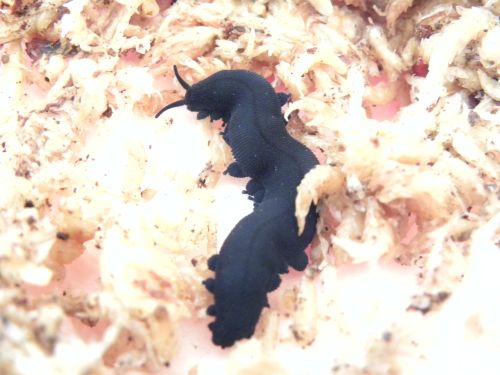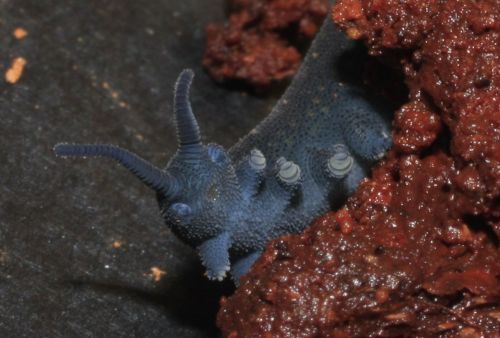by Piter Kehoma Boll
Velvet worms form an intriguing group of animals that are the sister group of arthropods and also the only animal phylum with only terrestrial species, although aquatic species are known from fossil records.
Today I decided to bring one velvet worm species to be our fellow. Scientifically known as Euperipatoides rowelli, I decided to give it the common name Rowell’s velvet worm.

A specimen of the Rowell’s velvet worm in the lab. Photo by Alan Couch.*
The Rowell’s velvet worm is found in south-east Australia inhabiting humid, temperate forests. They are small animals, with about 5 cm in lenght, and live in decaying wood, dwelling in crevices and feeding on small invertebrates, such as termites and crickets.
Logs are usually inhabited by groups of several individuals that live in a sort of social relationship and are composed of females, males and juveniles, with females being larger and occurring in larger numbers than males. A sort of hierarchical organization also seems to occur, with one female being dominant and followed in dominance by other females, with males and juveniles occupying the bottom of the pyramid. Prey capture often happens in group, and after a prey is subdued, the dominant female will eat first and only after being satiated she will allow other females to eat. Males and juveniles eat the remains left by the females.

Welcome to our log! Photo by Andras Keszei.**
New logs are colonized by wandering males. Those release feromones that attract more males and later females. Thus, newly colonized logs have a male-biased aggregation, but the number of females later surpasses that of males. It has been suggested that the initial aggregation of males helps them to attract females due to the increased concentration of feromones.
During reproduction, the male places spermatophores on the skin of the female, With the aid of the female blood cells, the body wall below the spermatophore is breeched and the sperm is released in the female’s body cavity, where it swims to the female reproductive tract.
Due to its abundance in south-east Australia, the Rowell’s velvet worm is an easily obtained species and is slowly becoming one more interesting model organism.
– – –
References:
Barclay S, Ash JE, Rowell DM (2000) Environmental factors influencing the presence and abundance of a log-dwelling invertebrate, Euperipatoides rowelli (Onychophora: Peripatopsidae). Journal of Zoology 250: 425–436.
Barclay S, Rowell DM, Ash Je (2000) Pheromonally mediated colonization patterns in the velvet worm Euperipatoides rowelli (Onychophora). Journal of Zoology 250: 437–446.
Reinhardt J, Rowell DM (2006) Social behavior in an Australian velvet worm, Euperipatoides rowelli (Onychophora: Peripatopsidae). Journal of Zoology 250: 1–7.
Sunnucks P, Curach NC, Young A, French J, Cameron R, Briscoe DA, Tait NN (2000) Reproductive biology of the onychophoran Euperipatoides rowelli. Journal of Zoology 250: 447–460.
– – –
*
This work is licensed under a Creative Commons Attribution 2.0 Generic License.
**
This work is licensed under a Creative Commons Attribution-NonCommercial-ShareAlike 2.0 Generic License.
